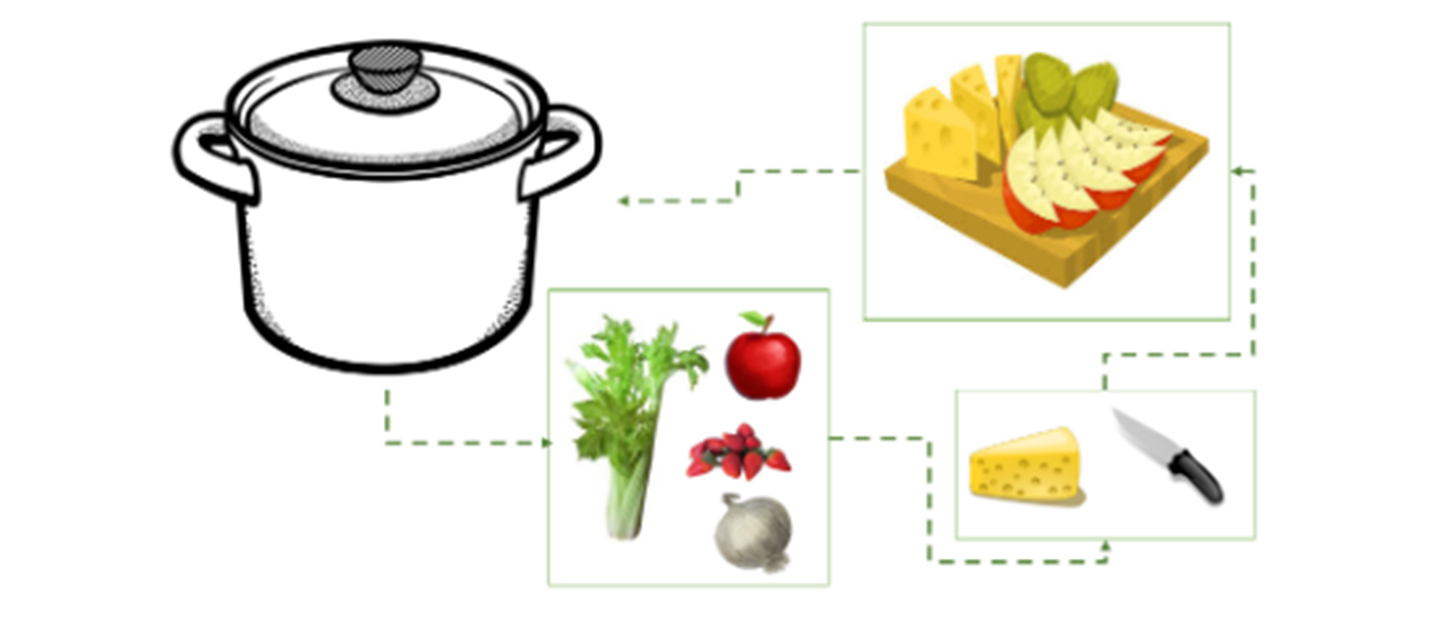Center for Excellence in Teaching and Learning
Kresge Library, Room 430
100 Library Drive
Rochester,
Michigan
48309-4479
(location map)
(248) 370-2751
[email protected]

While It Simmers: Engaging Focused and Diffuse Modes of Thinking
The brain is structured to use different modes of thinking to better accomplish tasks. The diffuse mode allows the brain to work on an idea “in the background” or unconsciously while we also operate in focused mode, which is a thought task that has our direct attention. While focused mode allows us to sketch a picture, diffuse mode alerts us if someone knocks on the door or reminds us that we have to call a friend.
In order to work through a complex mental challenge, such as those we want students to experience in our courses, learners have to engage both modes of thinking over a period of time. Within one complex problem, there are likely some parts that are more challenging than others. To most effectively work through the problem, we start by engaging the diffuse mode to work on the most challenging and time-consuming aspects. Then, we can shift our focused attention to smaller tasks while our brain works out the previous aspect “in the background.” Out of the blue, we may suddenly hit the “eureka” moment because our brain has worked toward a solution.
This is similar to making soup: while part of the soup has to simmer for a long stretch of time, we can clean ingredients, chop vegetables, and add the ingredients to the soup in order to achieve the best flavor.
What does this mean for students? If students can discern the hard and easier parts of a learning activity, they should first direct their “focused mode” to the hardest problems, but not for too much time. When the focused mode has started to stall, let that problem “simmer” and move onto the easier tasks. While working on these easier tasks and letting the brain simultaneously work on the other problem in the background, students will more effectively arrive at a solution. When taking a test, start with the hardest problems first in order to let the brain get an early start on those problems.
What does this mean for faculty? In order to get the most out of focused and diffuse modes in class, faculty should consider how class activities are structured and how to teach students to break down learning activities into its easier and harder parts. When faculty see students getting stuck on a problem, encourage them to shift their focused mode to something else. Faculty can also allow both modes of thinking based on the structure of students’ learning activities.
How to Engage Focused and Diffuse Modes of Thinking
1. Use assessments that let students determine a path of action
Consider the structure of your assessments (essays, quizzes, exams) and whether they allow students to move through the work in their own order, at their own pace. Are students required to complete questions in a certain order? If so, is the order necessary to the learning? If the order is important, use prompts at the beginning of an exam to help students start thinking about the harder questions. Then, if possible, place those questions at the end so that students’ diffuse mode will have had time to work through a particularly difficult question.
2. Start class with hard questions, and answer them at the end
By giving students a significant learning challenge at the beginning of class, you will bring their focused attention to the class content and likely get them to a stalling point. After a brief period of time, have them move away from that problem to smaller problems that will likely help them solve the larger challenge. After allowing the hard question to “simmer,” students can work on smaller tasks. The diffuse mode is in action, working on the problem in the background. At the end of class, go back to the challenge you opened class with and see if they have had any breakthroughs. This strategy not only shows students how the class material has furthered their learning, but also gets them into the habit of solving problems on a varied timeline.
3. Ask students to identify difficult and easy tasks, and plan accordingly
Be transparent about diffuse and focused modes and how they can help students not only learn but most effectively take tests and avoid test anxiety. Whether in practice problems or research projects, habitually ask students to create an action plan for the path they will take through the learning activity. Consider these prompts:
- What are the most challenging aspects of this work? How much time will you spend on these before moving onto easier aspects? This also helps with circumventing procrastination.
- What are the easier aspects of this work? How do they fit in with the challenging aspects, and how can you work through them to help with the more challenging aspects?
- If you have two hours to take a 45-question test, how much time should you let yourself be “stuck” on a question before moving onto a new one?
Focused and Diffuse Modes, from OU’s Barbara Oakley’s Learning How to Learn MOOC
For more on the content presented in this CETL Teaching Tip, watch the “Using the Focused and Diffuse Modes” video (Week 1) in the Learning How to Learn MOOC, featuring OU engineering professor Barbara Oakley and Terrence Sejnowski, UC San Diego biological studies professor.
Save and adapt a Google Doc version of this learning tip.
Written and designed by Christina Moore, Center for Excellence in Teaching and Learning at Oakland University. Published May 2019. Others may share and adapt under Creative Commons License CC BY-NC.



